Get PeakVisor App
Sign In
Search by GPS coordinates
- Latitude
- ° ' ''
- Longitude
- ° ' ''
- Units of Length

Yes
Cancel
Share ×

Scan the QR code and open PeakVisor on your phone
❤ Wishlist ×
Choose
Delete
Discover the chalk cliffs and ancient forests of Germany's largest island when visiting Jasmund National Park. There are 9 named points in Jasmund National Park. The highest and the most prominent hill in the park is Piekberg (161 m/528 ft).
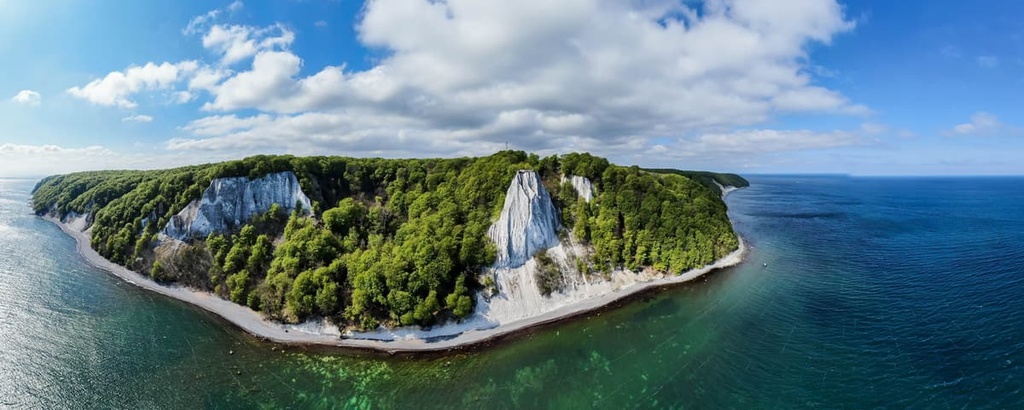
Jasmund National Park (Nationalpark Jasmund) is an area of protected countryside located in the German state of Mecklenburg-Vorpommern. The park encompasses the eastern portion of the Jasmund Peninsula on Rügen, Germany's largest and most populated island.
As it covers an area of 30.7 sq km (11.8 sq mi), Jasmund National Park is the smallest national park in Germany. Approximately 20 percent of Jasmund National Park is water.
Jasmund National Park's main feature is its 11 km (7 mi) long coastal cliffs, which overlook the Baltic Sea. These cliffs are particularly noteworthy as they are the highest chalk cliffs in Germany.
The majority of Jasmund National Park's landscape is dominated by the Stubnitz, a hilly and heavily wooded region that covers approximately 24 sq. km (9.2 sq. mi) of the park.
One prominent feature of the Stubnitz is the Stubnitz Ridge, which features the summit of Piekberg (161 m/528 ft). Piekberg is the highest point on Rügen and the fifth-highest point in the state of Mecklenburg-Vorpommern.
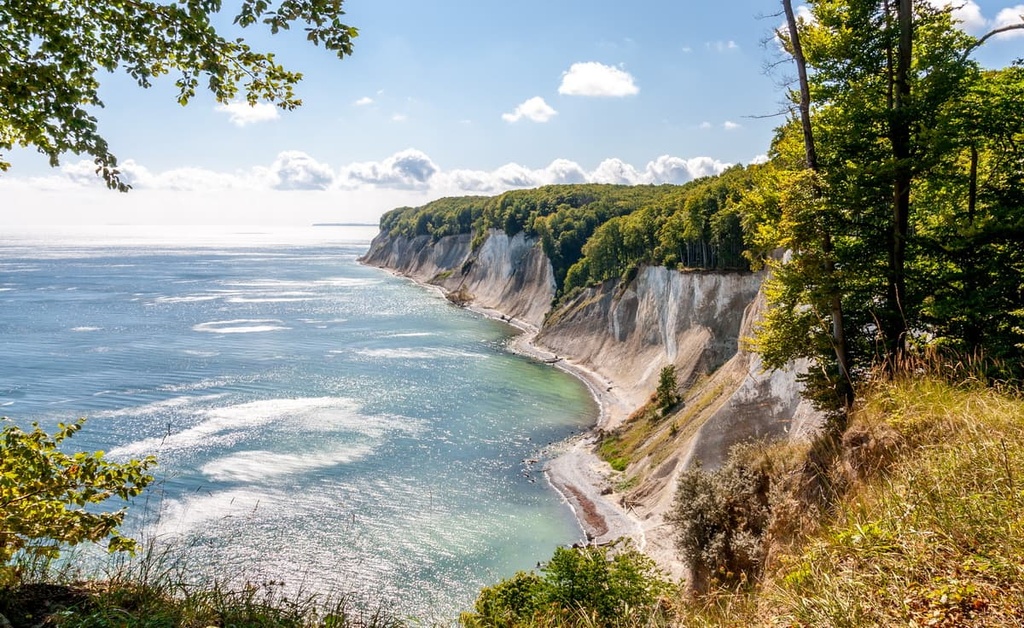
The most striking sea cliffs of the Jasmund Peninsula are a part of the Stubbenkammer promontory. In this area, you can find the Königsstuhl (118 m/387 ft), or King's Chair, which is a dramatic chalk cliff with a popular viewing platform. Other popular viewpoints include Victoria-Sicht and Ernst-Moritz-Arndt-Sicht.
The closest national park to Jasmund National Park is Vorpommersche Boddenlandschaft National Park (Nationalpark Vorpommersche Boddenlandschaft), which is located approximately 70 km (43 mi) to the west of Jasmund.
Notable towns that are located near Jasmund National Park include Sassnitz, Binz, and Glowe. Bergen auf Rügen, the largest town on Rügen, is situated approximately 20 km (12.5 mi) away from Jasmund National Park. Additionally, the 2,831 m (9,291 ft) long Rügen Bridge connects Rügen to the town of Stralsund on the German mainland.
The chalk cliffs of the Jasmund Peninsula are composed of Rügen chalk. Rügen chalk formed 70 million years ago at the end of the Cretaceous period. During this period, Rügen, along with the rest of Central Europe, lay beneath a shallow sea. Sediment from dead sea organisms was deposited and compressed on the bottom of this seafloor over the course of millions of years where it eventually formed chalk.
Rügen chalk is different from other chalks as it's incredibly pure, with a calcium carbonate content of about 97 percent. Rügen chalk is high in purity as it was formed primarily from the skeletons of a type of single-celled calcareous algae called coccolithophores. These coccolithophores left behind coccoliths, a type of microscopic calcite platelet.

Due to these coccoliths, Rügen chalk is fine-grained, brittle, and porous. It's also rich in flint concretions due to the high silicon dioxide levels found in these single-celled plankton. Fossils from squids, sea urchins, mussels, and corals are also common in Rügen chalk.
Until roughly 6,000 years ago, the Jasmund Peninsula was an island separate from Rügen. The recession of Scandinavian glaciers around 10,000 years caused sea levels to rise in the Baltic Sea.
However, despite the rising sea levels in the area, the Jasmund Peninsula wasn’t entirely covered in water. This is due, in part, to the effects of isostatic rebound (also called post-glacial rebound) on the region.
As the glaciers melted from the area, the land was relieved of downward pressure from the approximately 3,000 m (9,842 ft) thick sheet of glacial ice that once sat upon it. The melting of these glaciers subsequently allowed the land to “rebound” upward and rise up higher than it was before. This post-glacial rebound helped connect the Jasmund Peninsula and Rügen to form a single island.
That said, as a result of the porous nature of Rügen chalk and the erosive power of the surrounding ocean, the coastline of the Jasmund Peninsula is constantly changing.
For example, extreme weather and thawing in 2005 caused over 50,000 cubic meters (1,765,733 cubic feet) of chalk to fall off Jasmund's chalk cliffs. This collapse caused the partial demolition of Wissower Klinken (61 m/200 ft), a once-popular viewpoint.
Due to its wide variety of habitats and fertile soil, Jasmund National Park is an exceptionally biodiverse part of northern Germany. Read on to find out more about Jasmund National Park's wildlife and ecosystems.
Several large mammals can be spotted within Jasmund National Park, including roe deer, red deer, fallow deer, and wild boar. Along the park’s coastline lives Germany's largest natural predator—the gray seal. If you get lucky, you may even sight some harbor porpoises off the coast of the national park.
Some of the most unexpected residents of Rügen are raccoons. Even though they are native to North America, raccoons have lived on Rügen since escaping from zoo enclosures in the region during the mid-twentieth century.

The largest bird that inhabits Rügen is the white-tailed eagle, which nests in the forests of the Stubnitz. Other notable bird species in the park include little flycatchers, cranes, and sand martins.
The forests of the Stubnitz support ten bat species, the most important of which are whiskered bats and lesser noctule bats.
Notable reptiles native to Jasmund National Park include forest lizards, green snakes, adders, and smooth snakes. Amphibians present in the park include crested newts, fire-bellied frogs, and agile frogs.
The waterways of Jasmund National Park are home to crayfish and brown trout. Meanwhile, salmon and sea trout can be found in the Baltic Sea around Rügen and the Jasmund Peninsula.
Beech trees aren't the only trees found in Jasmund National Park. Alders and ash trees are also present in damper boggy areas in the region, while the park’s coastal canyons are home to elms, wild cherries, and maples.
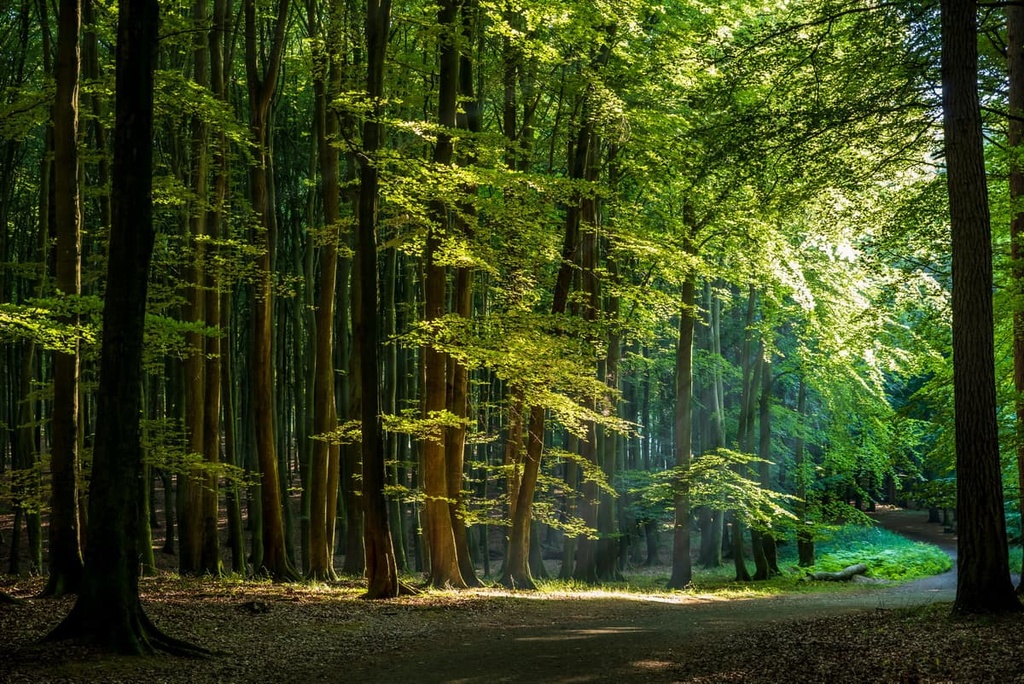
Forest barley, pearl grass, and grove rush grow between beech trees in Jasmund's dense forests. The park's moorlands feature buckbeans, sundews, and giant horsetails. Cotton grass is common in the park's bog areas, too.
Jasmund National Park is home to various types of orchids, including lady-slipper orchids and military orchids. Salt-tolerant vegetation, including salt chickweed, salt rush, and seaside centaury, grow on the park's northern block beaches.
Humans have inhabited the Jasmund Peninsula since at least the Middle Stone Age. Archeologists have found evidence of humans from the Lietzow culture living on the Jasmund Peninsula. The Lietzow culture was a group of hunter-gatherers from the Mesolithic Age who lived in the coastal areas of Pomerania.
Neolithic farmers began settling on Rügen about 5,000 years ago, at which point they began opening up the park's dense forests for pastures. Archeologists have uncovered megalithic tombs on the Jasmund Peninsula dating back to this period.
The remnants of Bronze Age fortifications and burial mounds dating back 3,800 years have also been uncovered in Jasmund National Park. A Germanic tribe called the Rugians lived on Rügen until the Migration Period in the third century. The island takes its name from the Rugian tribe.
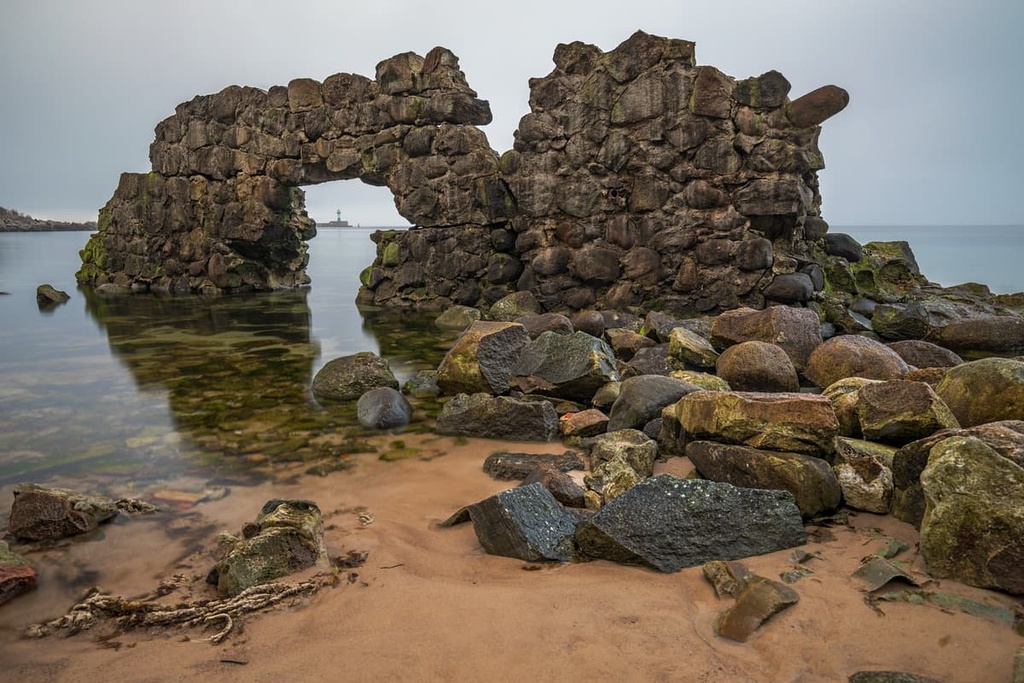
Interestingly, there have been no significant forest clearings on the Jasmund Peninsula since the Rugian tribe left the area. However, several tribes and civilizations have controlled Rügen over the past 1,500 years. In particular, the West Slavic Rani tribe inhabited Rügen from the eighth century until it became a suzerainty of Denmark in the twelfth century.
In the fourteenth century, the Wars of the Rügen Succession led to Rügen becoming part of Pomerania-Wolgast and the Holy Roman Empire. Rügen then became part of Swedish Pomerania between the seventeenth and nineteenth centuries.
Eventually, Rügen became a part of Prussia in 1815 as a result of the Vienna Convention. Following the construction of the island’s first beach resort, Putbus, Rügen became a popular vacation destination until the Second World War. After the Second World War, Rügen became one of the main tourist areas in East Germany.
Today, Rügen is the most populous island in Germany. Jasmund National Park was established in 1990 in order to protect the park's unique chalk cliffs and biodiversity. Additionally, roughly 5 sq. km (1.9 sq. mi) of terrain at the park's core was designated a UNESCO World Heritage Site in 2011 in order to protect the area's ancient beech forests.
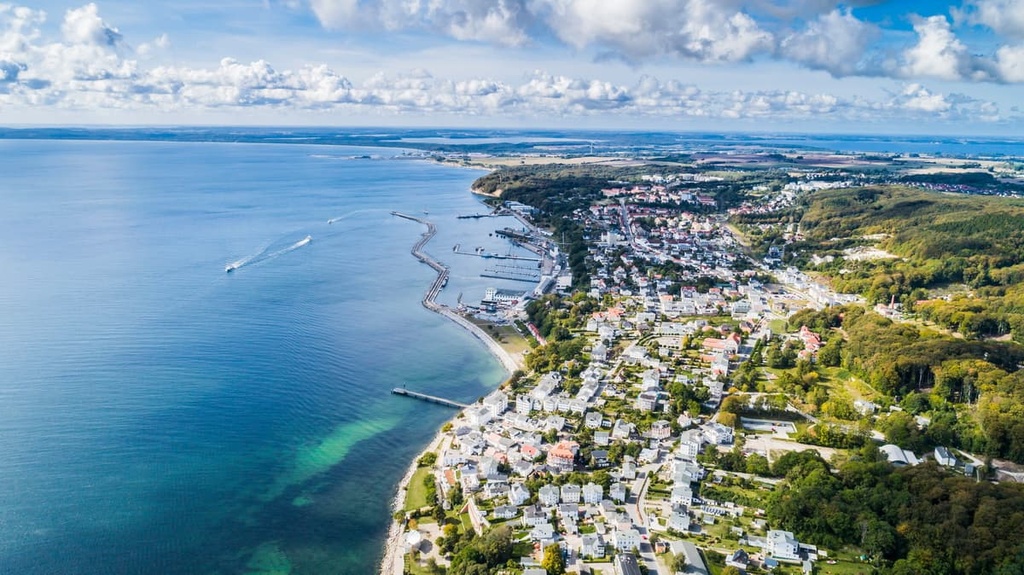
Thanks to its location on Rügen and its unique landscape, Jasmund is one of Germany's most popular national parks. Over 1.5 million visitors flock to Jasmund National Park annually.
Jasmund National Park's trails differ in quality, so a good pair of hiking boots are required when visiting the park. If you're walking along the beaches below the cliffs, watch out for falling scree, which can be quite dangerous.
All of the major hiking trails in the park are signposted with white and blue markers. Orientation points dotted across the park make it easy to describe your location if you need assistance from emergency services or park officials. You can find out more about the park's trails on its official website.
With that in mind, read on to learn about the best hikes in Jasmund National Park.
The Hochuferweg or High Shore Walk is the longest marked walking trail in Jasmund National Park. This trail's 8 km (5 mi) coastal section is referred to as the Hochuferweg Sassnitz–Königsstuhl.
The High Shore Walk runs for 12 km (7.4 mi) along the park's entire coastline, highlighting the relationship between the park's dense forests and its chalk cliffs.

The trail starts from the Parkplatz Lohme in the center of Lohme. After 4 km (2.5 mi), you'll reach the Königsstuhl National Park Center. From the visitors center, you can take a short detour to Königsstuhl (118 m/387 ft).
Slightly further along this trail is the Victoria-Sicht, another clifftop observation point that offers one of the best views of Königsstuhl. You'll also pass the Karin-Christiane-Sicht (60 m/197 ft) viewpoint on this walk.
Keep in mind that hikers on this trail are advised to stay on the path and away from the cliff edge to reduce their risk of getting hit by falling rocks. You can take a bus back to your starting point after arriving at the end of the trail in Sassnitz.
The Gummanz Trail is a short educational walk where you can learn about and observe Jasmund National Park's chalk landscape. This 3.1 km (2 mi) trail starts from the car park next to the Chalk Museum Rügen (Kreidemuseum Rügen).
The museum is located in a disused chalk factory and features unique exhibits on local fossils, Rügen's chalk industry, and more. From the museum, the trail leads through the Kleinen Königsstuhl, an old chalk quarry that has since been reclaimed by nature.
Along the path, you'll first pass over Kikberg (120 m/394 ft), which affords panoramas of the Kleinen Königsstuhl. Toward the end of the walk, you'll find the Opferstein von Quoltitz, a 73-ton sacrificial stone with evidence of human activity on Rügen from the Bronze Age. The trail then loops back to your starting point at the museum.
Follow the Hagen and Kollicker Place Trail (Hagen und Kollicker Ort) if you're looking to experience the best of Jasmund National Park's ancient beech forests. You can pick up this 8.7 km (5.4 mi) trail by parking at Großparkplatz Hagen.
The Hagen and Kollicker Place Trail leads hikers through the park's forests to the Königsstuhl National Park Center, following the “Forest” Adventure Trail (“Wald” die Besucher).
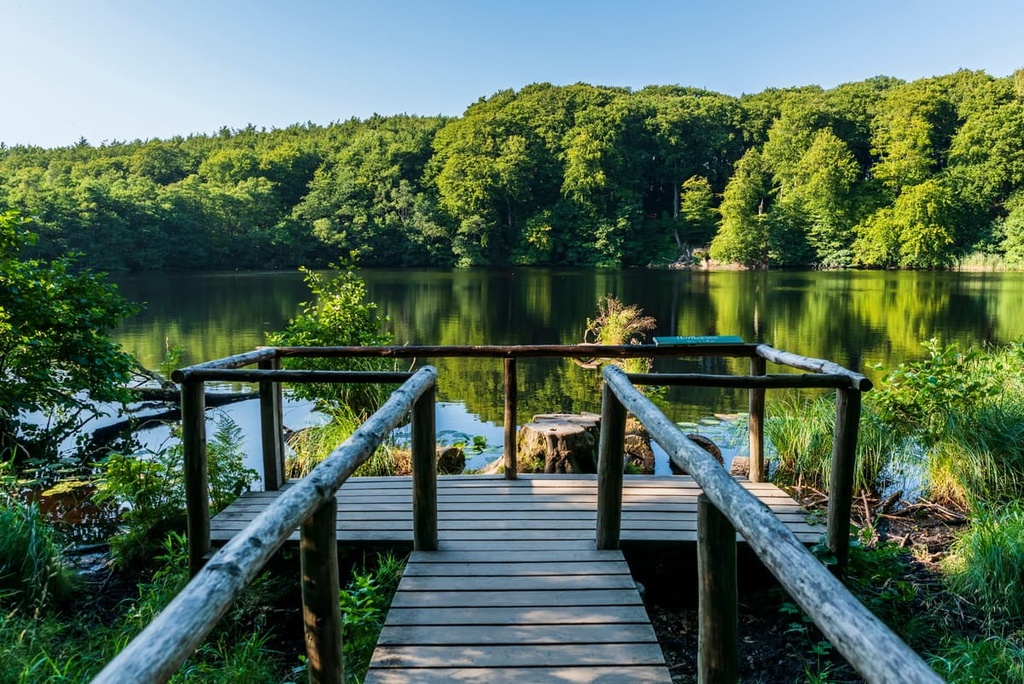
On the way to the national park center, you'll pass Herthasee, a small picturesque lake. Here, you'll find the remains of Herthaburg, a Slavic fort dating back to the eighth century.
From the Königsstuhl National Park Center, the path follows the same route as the High Shore Walk until you reach the Kollicker Ort viewpoint. The trail then heads back inland through the Old Beech Forests (Alte Buchenwälder) UNESCO World Heritage Site.
The UNESCO World Heritage Forum Trail (UNESCO-Welterbeforum) takes in the best of the park's southernmost sections. This 6 km (3.7 mi) loop trail starts at the Parkplatz Nationalpark in Sassnitz on the park's southern boundary.
The trail then leads through ancient beech forests before turning towards the coast via the UNESCO World Heritage Forum. This charming visitor's center is complete with exhibits and a café, so it’s the perfect place for a break at the midway point along this hike.
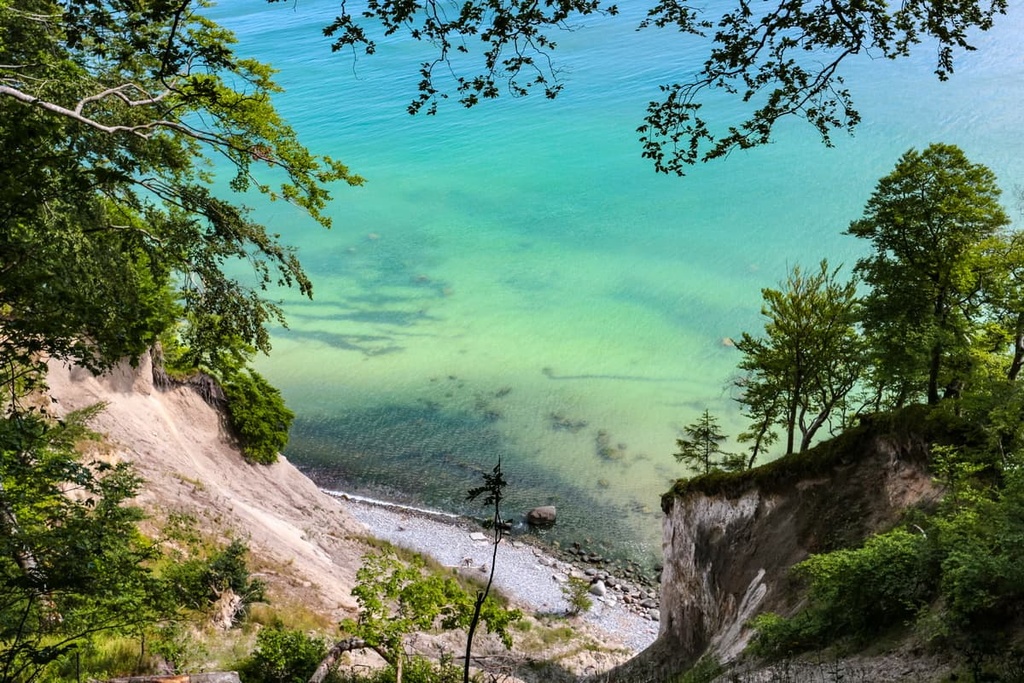
The path back to your starting point then takes you along the Hochuferweg Trail. A notable destination that you’ll pass by as you walk along the coastline back to the trailhead is the Wissower Klinken (61 m/200 ft), a scenic cliff that was partially destroyed by poor weather in 2005.
As Germany's top tourist island, Rügen boasts several seaside resorts and attractive towns. Read on to find out more about the main settlements near Jasmund National Park so you can start planning your next trip to the region.
Bergen auf Rügen is the largest settlement on Rügen and the former capital of the Rügen district. This picturesque town is located at the heart of the island, roughly 20 km (12.5 mi) from Jasmund National Park.
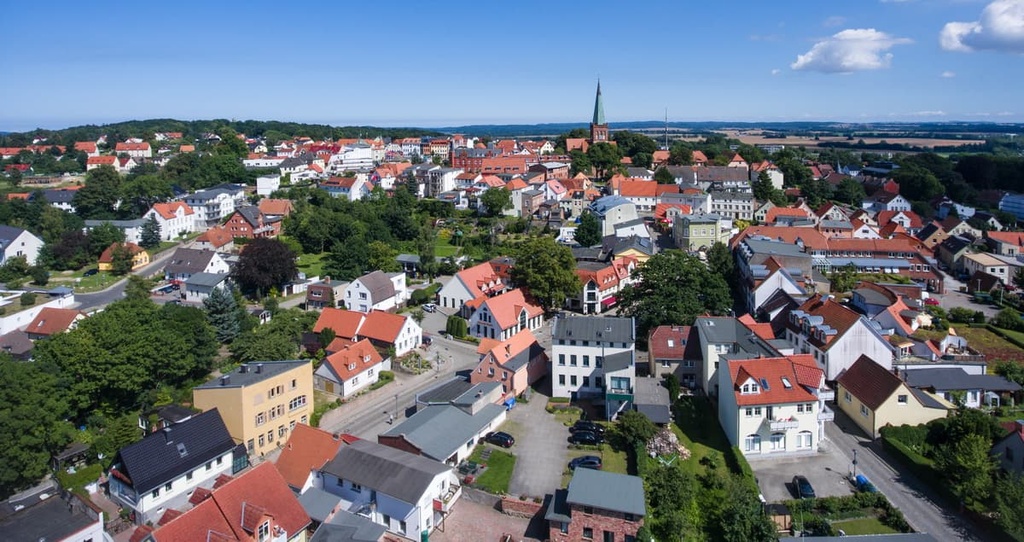
There's plenty to keep you entertained in Bergen auf Rügen. While in town, climb up the Ernst Moritz Arndt Tower atop Rugard (92 m/302 ft) for the best views of the island from its center. Or, get your adrenaline pumping at Inselrodelbahn, a year-round toboggan attraction.
Popular hotels in Bergen auf Rügen include the Parkhotel Rügen, Romantik Hotel Kaufmannshof, and Hotel Gesellschaftshaus.
Located on Jasmund National Park's southern boundary is the town of Sassnitz. This beautiful seaside town with its pristine white buildings and oceanfront hotels has been a favorite destination among tourists for over a century.
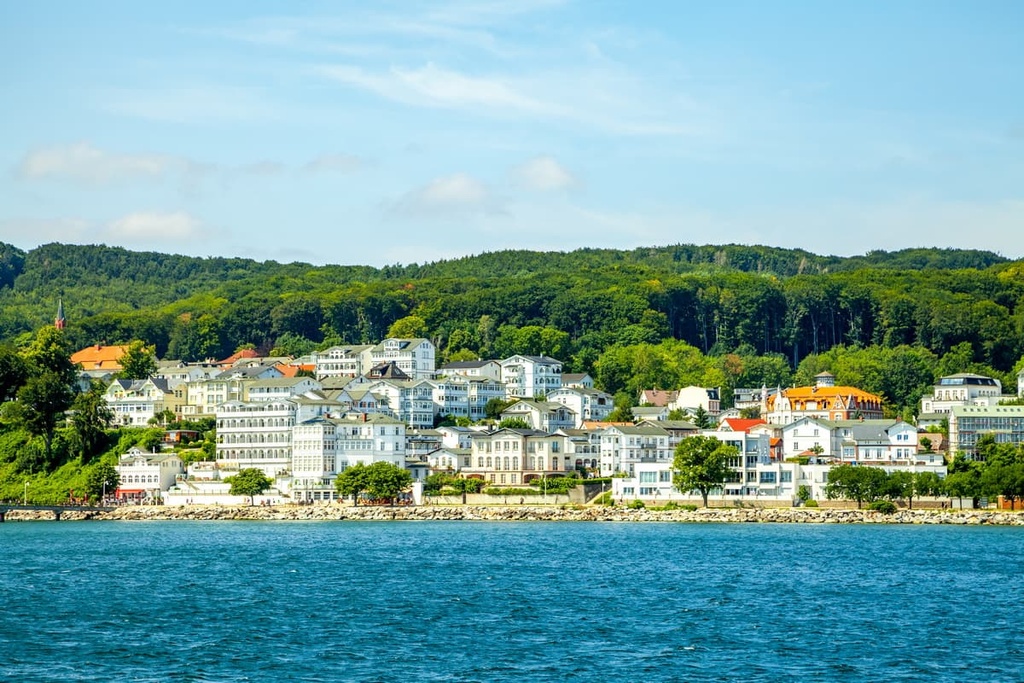
Sassnitz is home to some exciting attractions, namely the Erlebniswelt U-Boot, a decommissioned British submarine that now serves as a museum. From Sassnitz's port, you can even catch ferries to Trelleborg in Sweden and Rønne on Denmark's Bornholm island.
Popular hotels in Sassnitz include the Rügen Hotel, Hotel Koenigslinie, and Parkhotel del Mar.
Binz is Rügen's largest and most famous seaside resort. It's sandwiched between Prorer Wiek Bay and Schmachter See on a thin land bar called Schmale Heide. The town of Binz is located less than 20 km (12 mi) south of Jasmund National Park.
Spend your days in Binz soaking up the sun on the 5 km (3 mi) long beach called Binzer Strand. Or, you can hike along the Treetop Walkway at the town’s Natural Heritage Center Rügen (Baumwipfelpfad im Naturerbe Zentrum Rügen). Along this trail is a 40 m (131 ft) tall lookout tower that provides sweeping views of the surrounding forests and lakes.
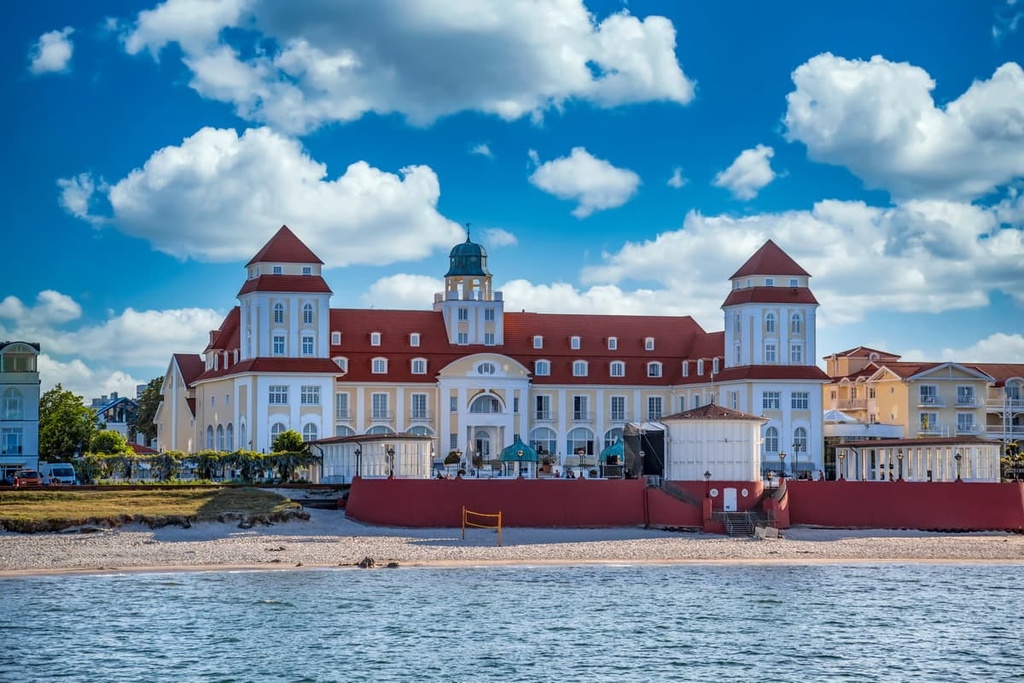
Popular hotels in Binz include IFA Rügen Hotel & Ferienpark, Centralhotel Binz, and Rugard Thermal Strandhotel.
Putbus is the oldest resort on Rügen and one of the island's most beautiful towns. It was built in 1810 by Prince Wilhelm Malte I of Putbus to serve as his royal residence.
The architecture in Putbus is almost entirely Neoclassical in design, adding to its charm. Putbus is also known as a “Rose City,” or Rosenstadt, as over 100 rose varieties can be found growing across the town.
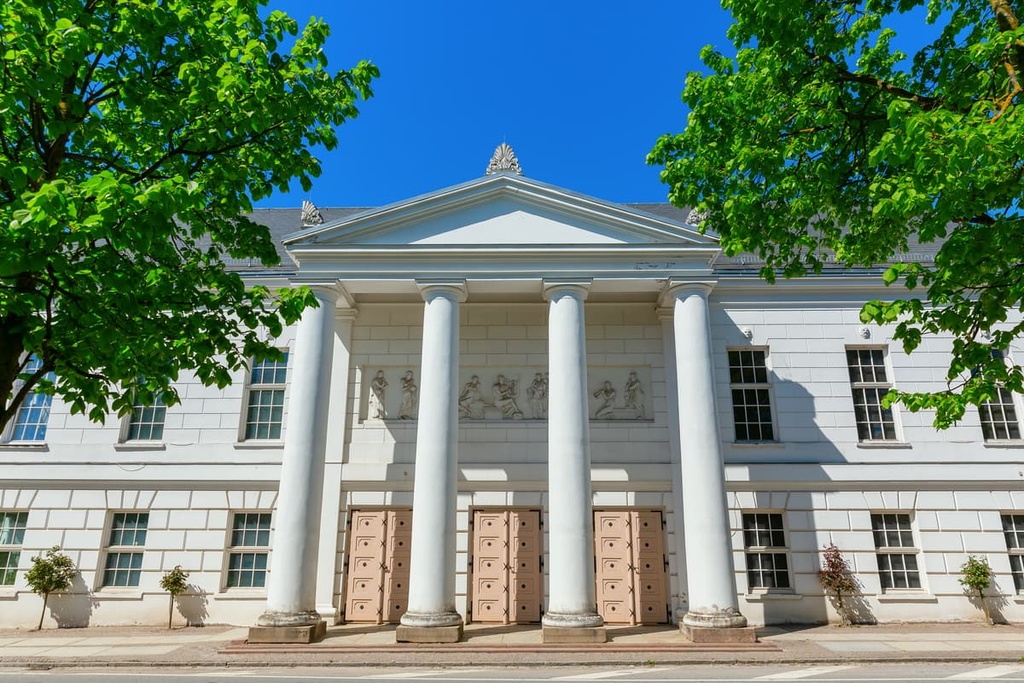
While in Putbus, be sure to stroll through Schloss Park, ride on the Rügen narrow-gauge railway (Rügensche Bäderbahn) to Lauterbach, and chow down on some delicious seafood.
Putbus is located approximately 30 km (19 mi) south of Jasmund National Park, so it’s a great place to base yourself for any trip to the region. Popular hotels in Putbus include the Parkhotel Putbus, im-jaich Wasserferienwelt, and Hotel Badehaus Goor.
Sat on Rügen's northern coastline overlooking Tromper Wiek bay is the community of Glowe. This state-recognized resort is located at the southern end of the Schaabe land bar and is known for its numerous white sandy beaches. Glowe is located approximately 10 km (6 mi) to the west of Jasmund National Park.
Glowe has a variety of attractions for travelers of all ages to enjoy, from the historic fourteenth-century Spyker Castle to the Dinosaur Land theme park. Popular hotels in Glowe include the Hotel Schloss Spyker, Aparthotel Ostseeperle, and Zur Schaabe Gasthaus.
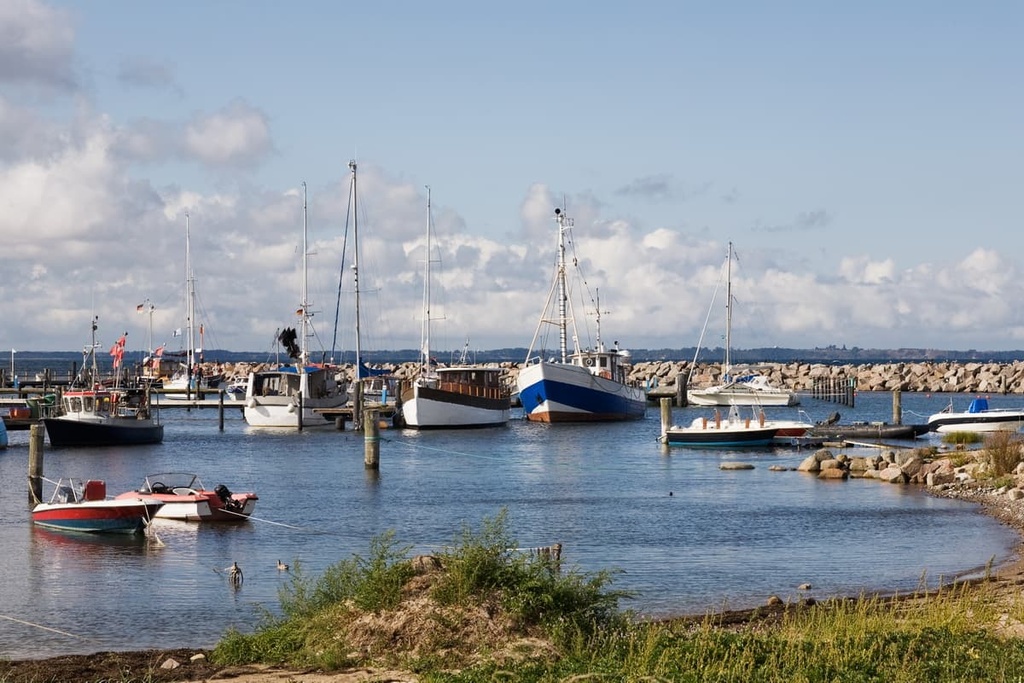
Explore Jasmund National Park with the PeakVisor 3D Map and identify its summits.








